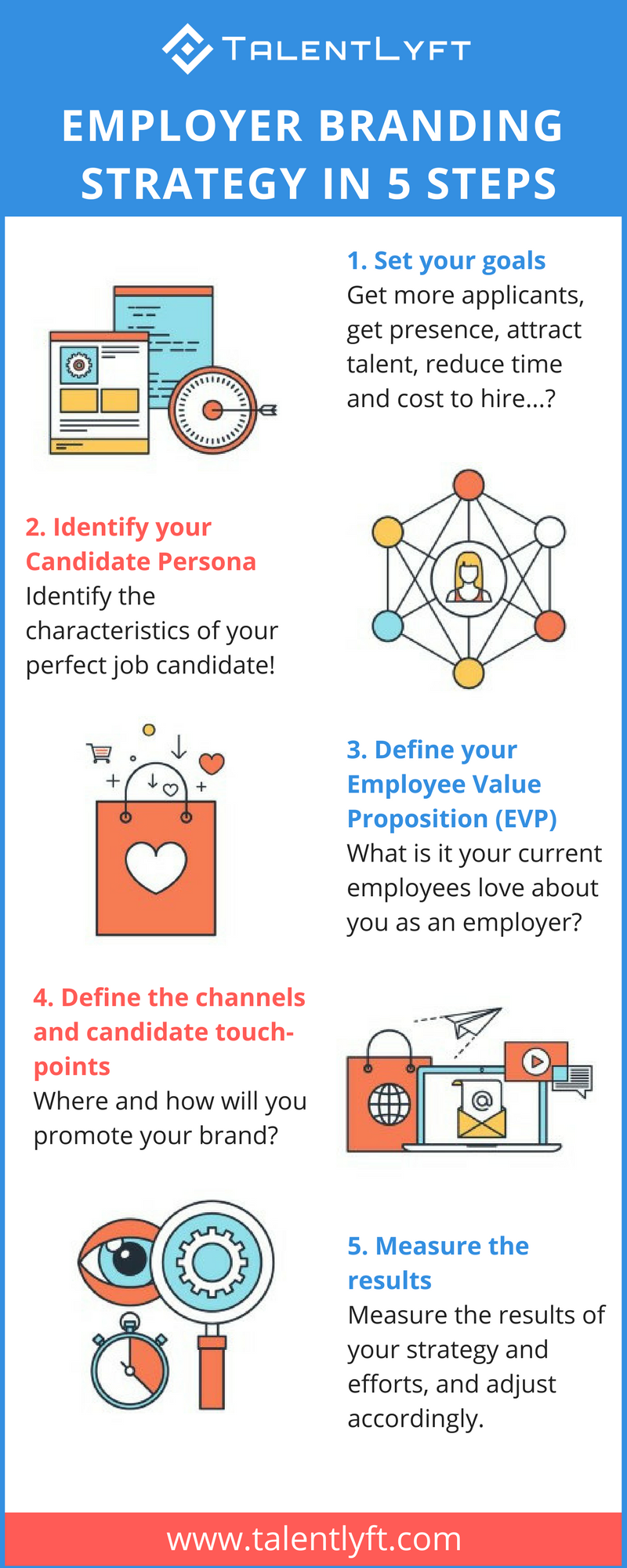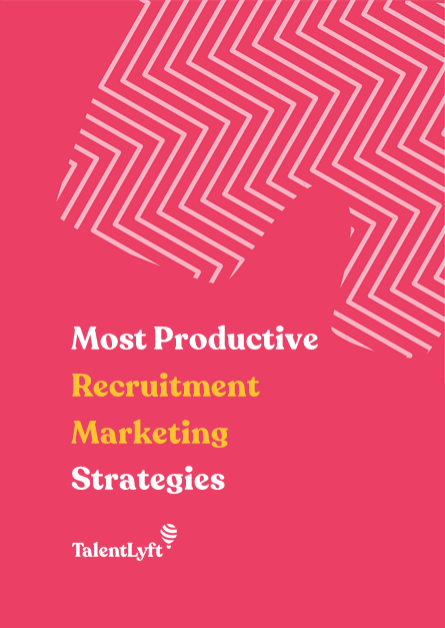
Planning, developing and implementing Employer Branding strategy is not an easy task. Here, we have defined 5 steps to follow when implementing Employer Branding strategy.
Planning, developing and implementing Employer Branding strategy is not an easy task. Here, we have defined 5 steps to follow when implementing Employer Branding strategy.
Employer branding is one of the key recruitment trends you should implement in 2020.
Now, let's continue with an infographic explaining how to build an employer brand in 5 easy steps:

Employer Branding is a key component of every successful Talent Acquisition strategy. Having clearly defined Employer Brand can help you find the right job candidates, attract, engage and hire them.
In this world of "War for Talent", well-planned Employer Branding strategy can be a huge competitive advantage that sets you apart from their competitors.
Top companies use advanced employer branding and recruitment marketing tactics to differentiate their employer brand.
Employer Brand is what your employees, current and potential future job candidates think about you as an employer. It is their perception of how you treat your employees and candidates as well as your Employee Value Proposition.
➡️ Check out our free Guide for Finding High-Quality Job Candidates!
Successful recruiters know how to develop and implement a productive Employer Branding strategy, and they are full of interesting Employer Branding ideas.
Here are the 5 steps to follow when implementing an Employer Branding strategy:
Think about what do you want to achieve with your Employer Branding strategy. Some of the common Employer Branding goals include:
Defining your candidate persona is a crucial step here. Without knowing who your perfect candidate is, you won't be able to send targeted messages to the candidates that you want to attract.
Here is our cheat sheet for defining a candidate persona!
Do you know why your current have chosen you? Do you know why do they stay? Do you know what do they like most about you as an employer?
These are all the questions you need to answer in order to set up a successful Employer Branding strategy. Answers to these questions best explain your Employee Value Proposition. Your EVP is the message you will target your candidate persona with.
These are the main 5 blocks of every employee value proposition:
There are around 10 touchpoints with candidates before they get hires. They are points of, thus called, candidate journey. Many of these touchpoints are also channels for promoting your Employer Brand.
These are just some of the channels where you can promote your Employer Brand:
HR Analytics and measuring the most important hiring metrics has become one of the main 2018 goals for HR professionals. Based on the goals that you set up in the first step, you should measure the success of your Employer Branding strategy.
Data-driven recruiting, however, is impossible without the right recruiting tools! Today, there are many HR tech solutions that help HR professionals excel their Employer Branding strategies.
If you are interested in Employer Branding and other HR related content, check out our 12 Guides for HR Professionals.
Also, Employer Branding is something we have helped hundreds of HR professionals around the world. TalentLyft is a recruiting software with which companies find, attract and hire best talent more successfully. If you are interested to hear more, schedule a call with our recruiting experts!
With TalentLyft, you can create a beautiful career site, post job openings on Social Media and create branded emails in communication with candidates. Schedule a TalentLyft demo to see how it can help you showcase your Employer Brand!
What are the key components of an effective employer branding strategy?
Employer branding strategy should encompass defining your company's unique value proposition, crafting a compelling message, choosing the right channels to spread your message, engaging your employees to become brand ambassadors, and measuring the effectiveness of your branding efforts to make informed adjustments.
How important is employee involvement in employer branding?
Employee involvement is crucial as employees are the most authentic and convincing brand ambassadors. Their testimonials, stories, and experiences provide genuine insights into the company's culture and values, significantly enhancing the credibility of the employer brand.
What role does company culture play in employer branding?
Company culture is at the heart of employer branding. It defines the environment in which employees work and influences how outsiders perceive the company. A positive, well-defined company culture attracts potential candidates who align with the company's values and vision.
How can a company measure the effectiveness of its employer branding strategy?
The effectiveness of an employer branding strategy can be measured through various metrics such as brand awareness, employee engagement and satisfaction, quality of hire, time to hire, and retention rates. Surveys and feedback can also provide valuable insights into brand perception.
Why is it important to choose the right channels for your employer branding message?
Selecting the right channels ensures that your employer branding message reaches your target audience effectively. Different channels have varying reach and effectiveness depending on the demographics and preferences of potential candidates. Tailoring your approach to the most relevant platforms maximizes engagement and impact.












